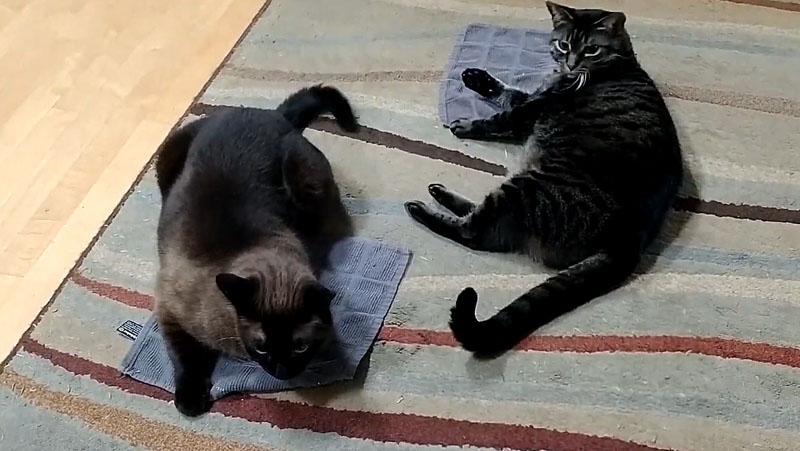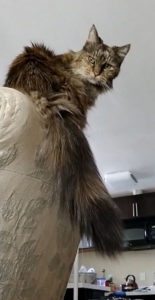Decoding your cat’s behavior

 Cats are so independent, yet so affectionate. They can be comical while leaving you to wonder about their actions.
Cats are so independent, yet so affectionate. They can be comical while leaving you to wonder about their actions.
In an attempt to better understand these fantastic felines, let’s see if I can answer the question: “Why does my cat do that?” Here are some common behaviors and possible reasons why our cats do what they do.

Chattering. You’ve most likely heard your feline vocalize in way you might call “kitty Morse Code.” Cats usually do this when they recognize a bird while looking out of a window. Your feline could be baffled that they can’t get outside to chase prey. They additionally might be excited and marginally bothered by the situation.
Cheek rubbing. Also known as scent marking or bunting. When your kitty rubs his head on you, he is accomplishing something beyond showing you friendship and making proper acquaintance. He is, in part, letting everyone know that you belong to him. Cats will also scent mark unfamiliar environments to make them smell more familiar, such as when they are at the vet’s office.
Bringing you “gifts.” Behaviorists have a couple of hypotheses on why your feline is relentless in his quest for leaving his kills for you. Even though this might seem gross, your kitty is recognizing you as a member of the pride and is offering to share its prey with you.
Showing stress or affection?
Chewing on non-food items. If your feline appreciates biting on or trying to ingest non-consumable things, it could be an indication of an uncommon condition called pica. This behavior warrants a full veterinary examination as the reasons why this occurs can vary greatly.
Treatments include changing the diet, implementing enrichment and prescribing medication.
Making “biscuits.” It can be soothing to watch a cat calmly knead on a soft blanket or pillow. Cats often do this when they are content. But it can be a sign of stress, and the cat is attempting to soothe itself. Cats will also purr to self-soothe in times of stress and when they are in a great deal of pain.
Slow blinking. This is one of the most common behaviors I hear about from pet owners. In feline language, it is the equivalent of giving a physical kiss. Cats will do this when they are content and relaxed in your presence.
3 a.m. zoomies. Isn’t it wonderful to be jolted awake in the middle of the night by your feline hurtling down the foyer? Most cats have a lot of energy that is suppressed throughout the day, and they need to get it out.
The infamous flicking tail. No, cats don’t “wag” their tails when they’re happy. They do it when they are irritated or over-stimulated during play. Approach these cats with extreme caution.
You can contact Stephanie at cooperativecaretraining@gmail.com or 510-408-7162. Visit the website cooperativecaretraining.com for more information.

Stephanie Zablah-Kruger
Animal behaviorist, Stephanie Zablah-Kruger, 37, has 14 years’ experience in the veterinary field and as a trainer. Reach her at cooperativecaretraining@gmail.com, (510) 408-7162.
